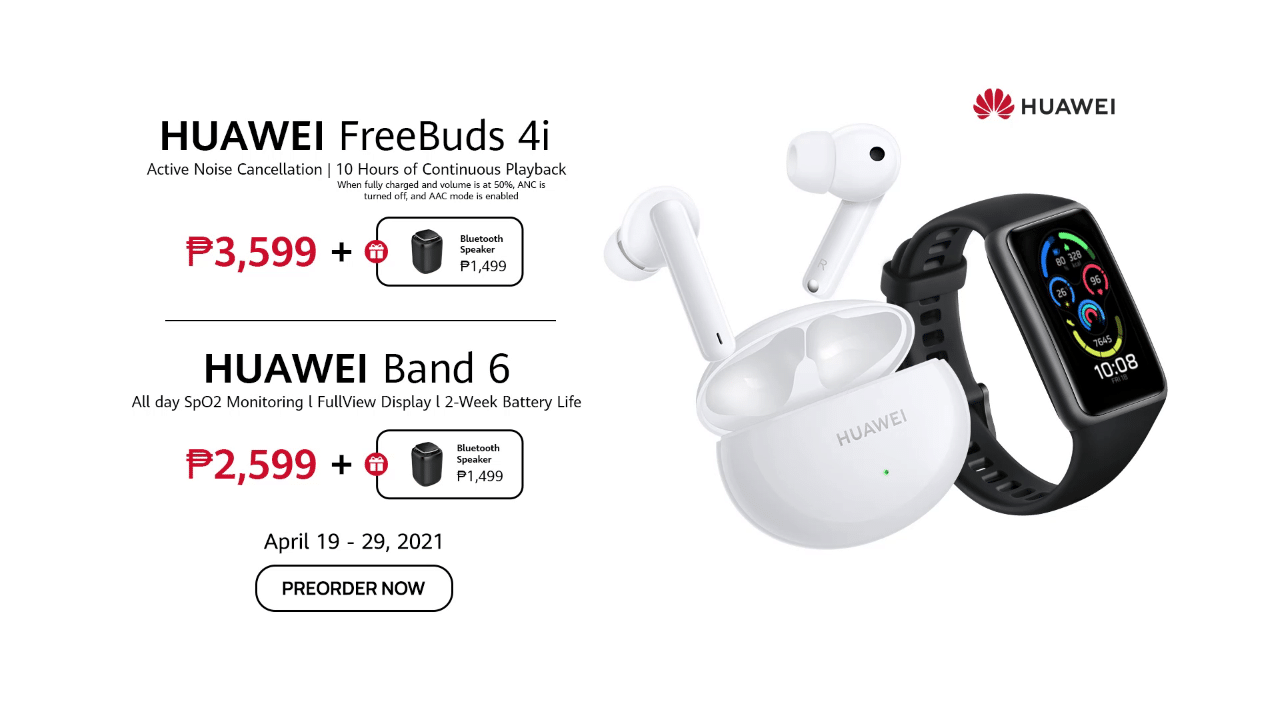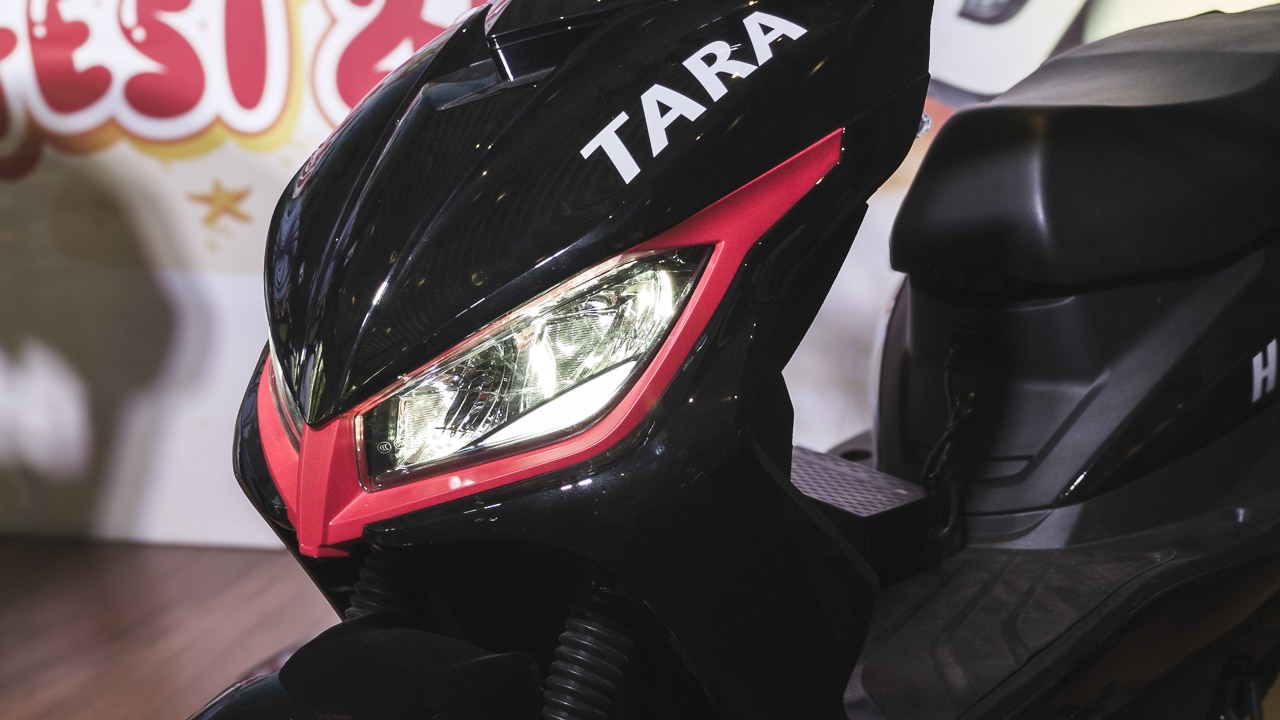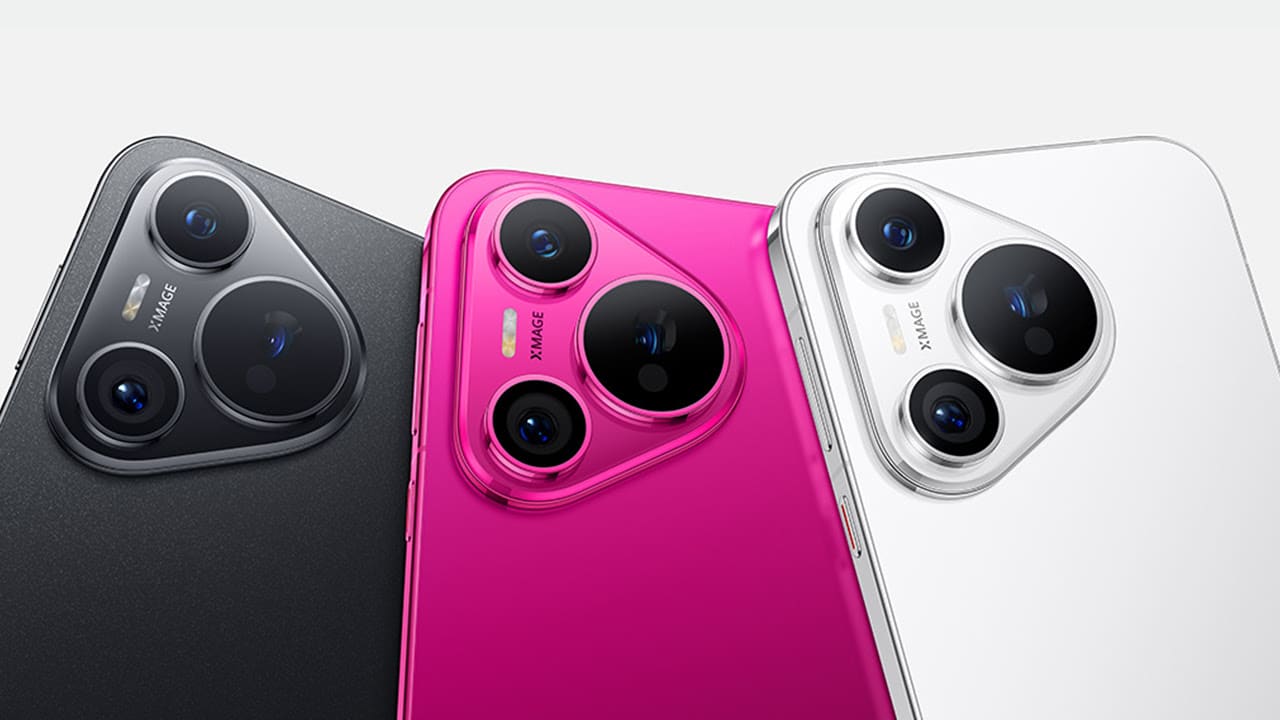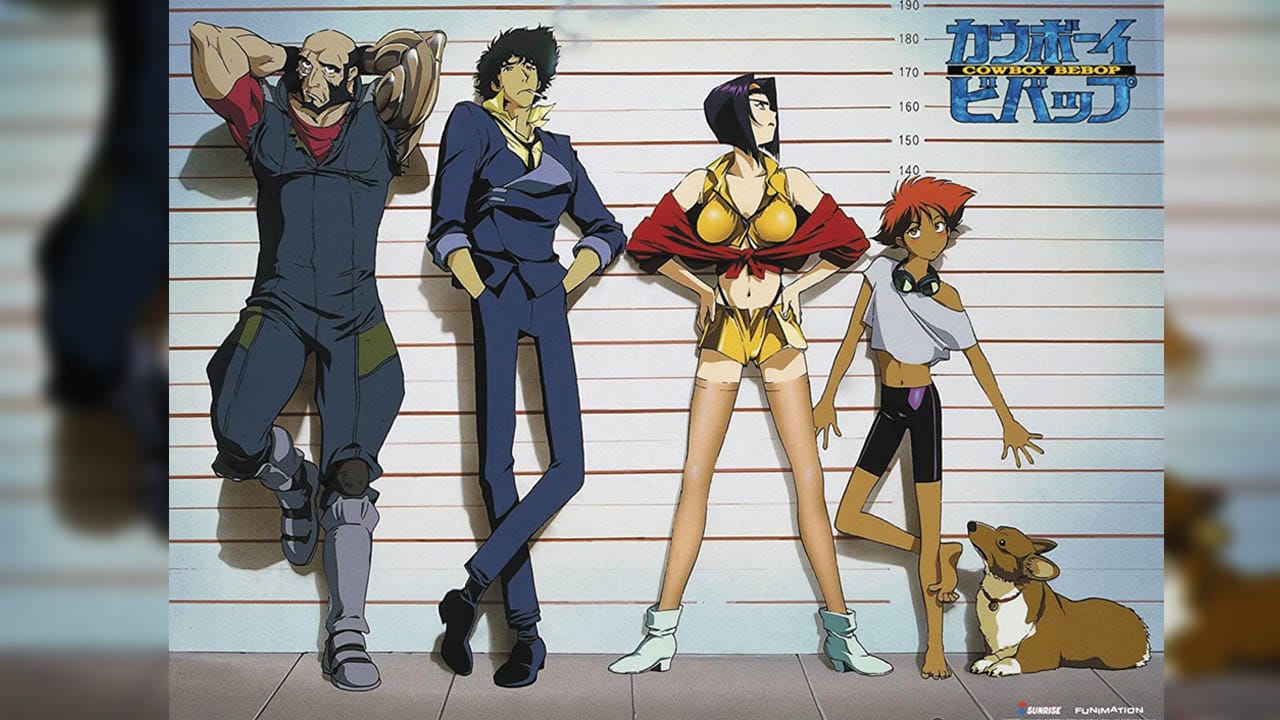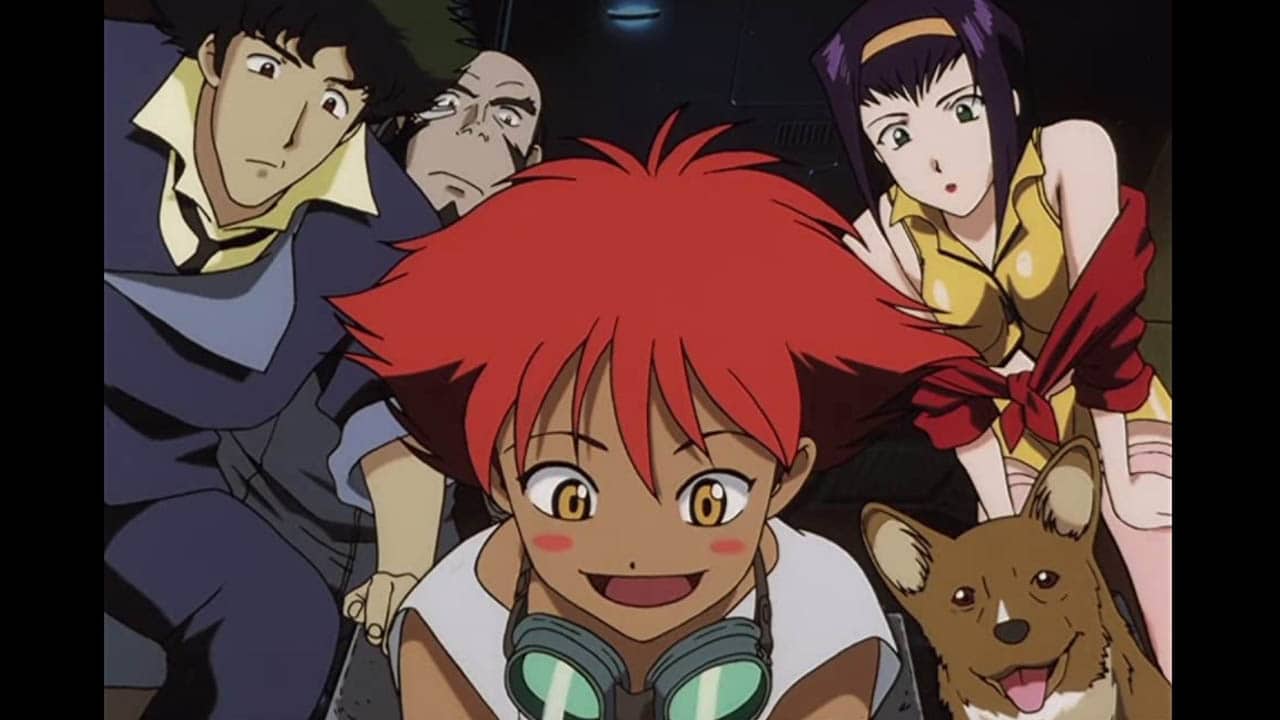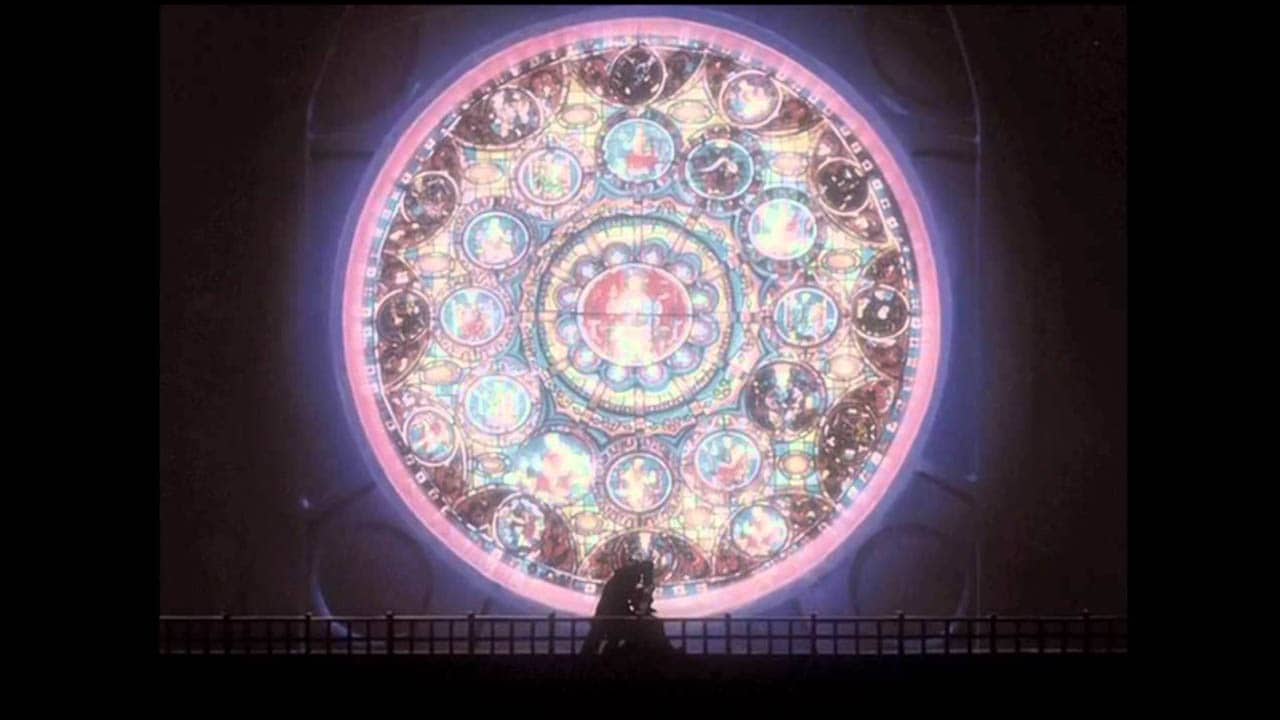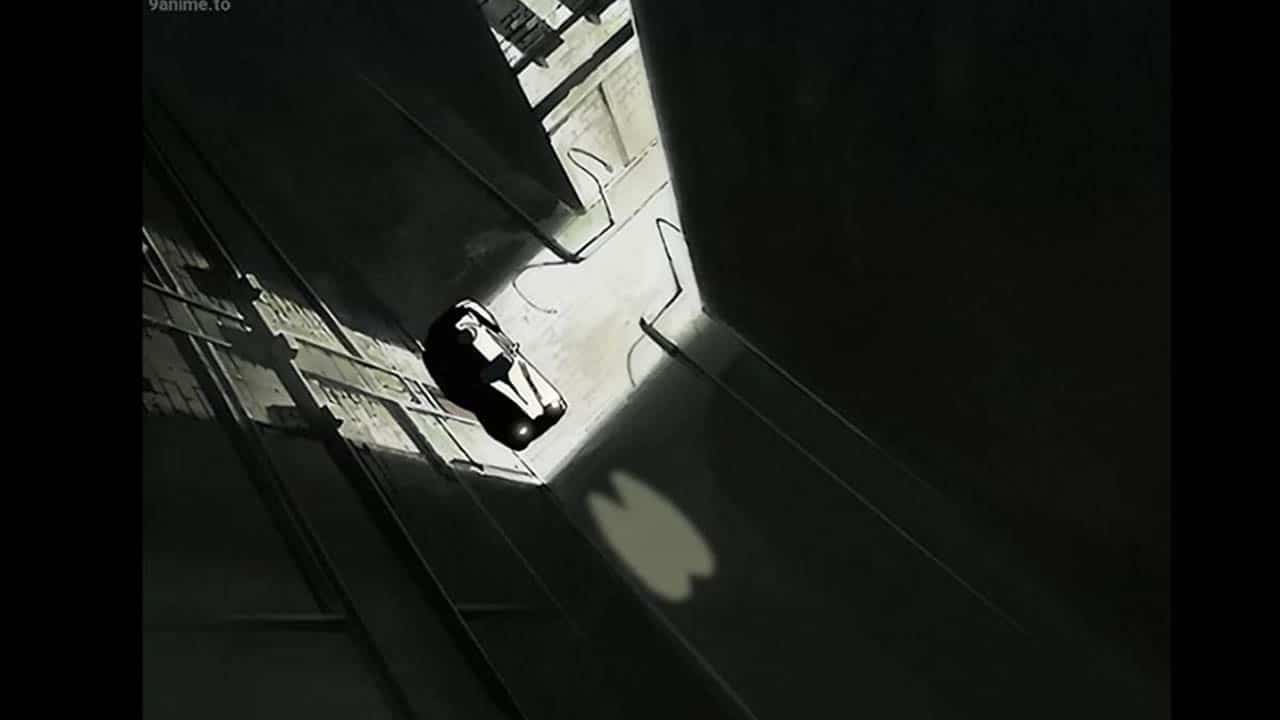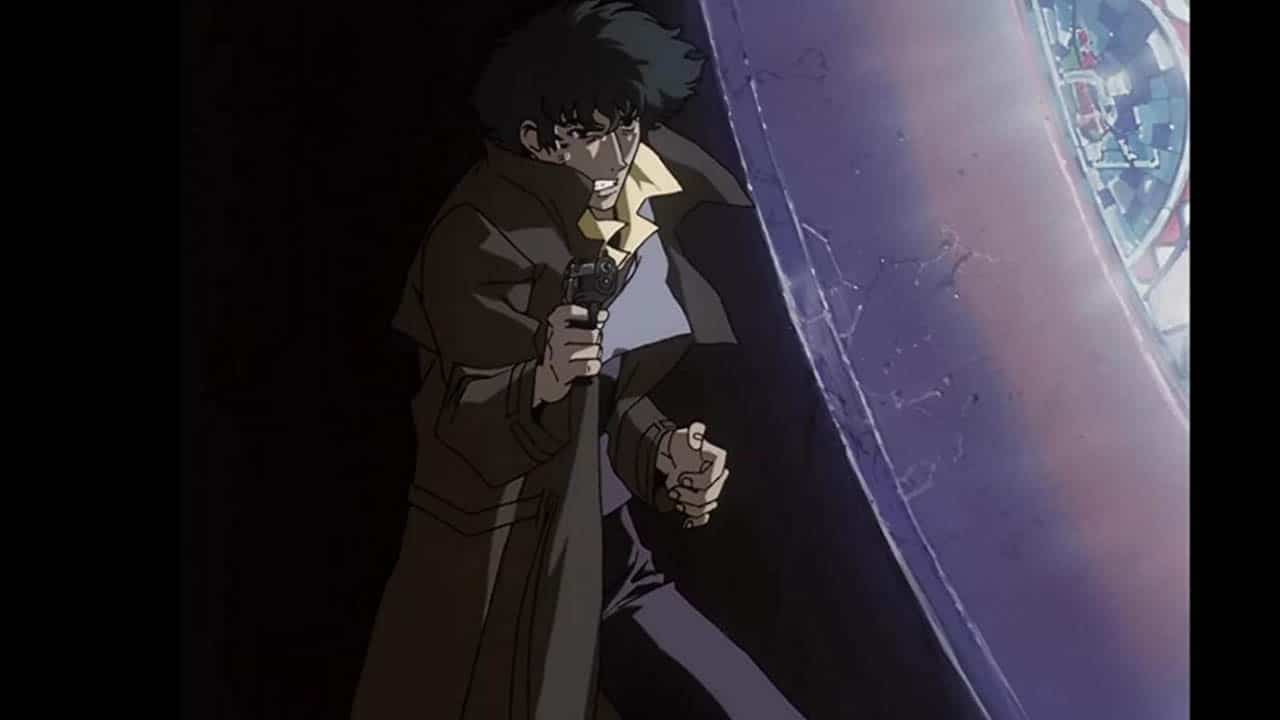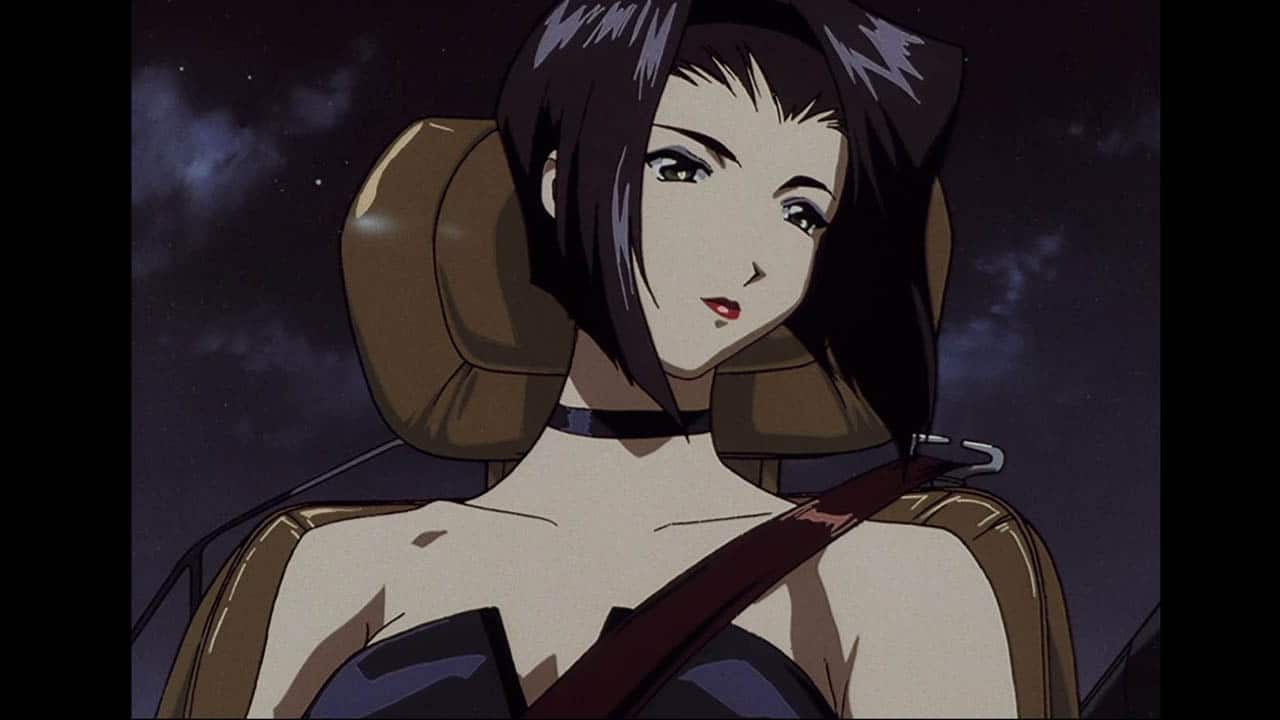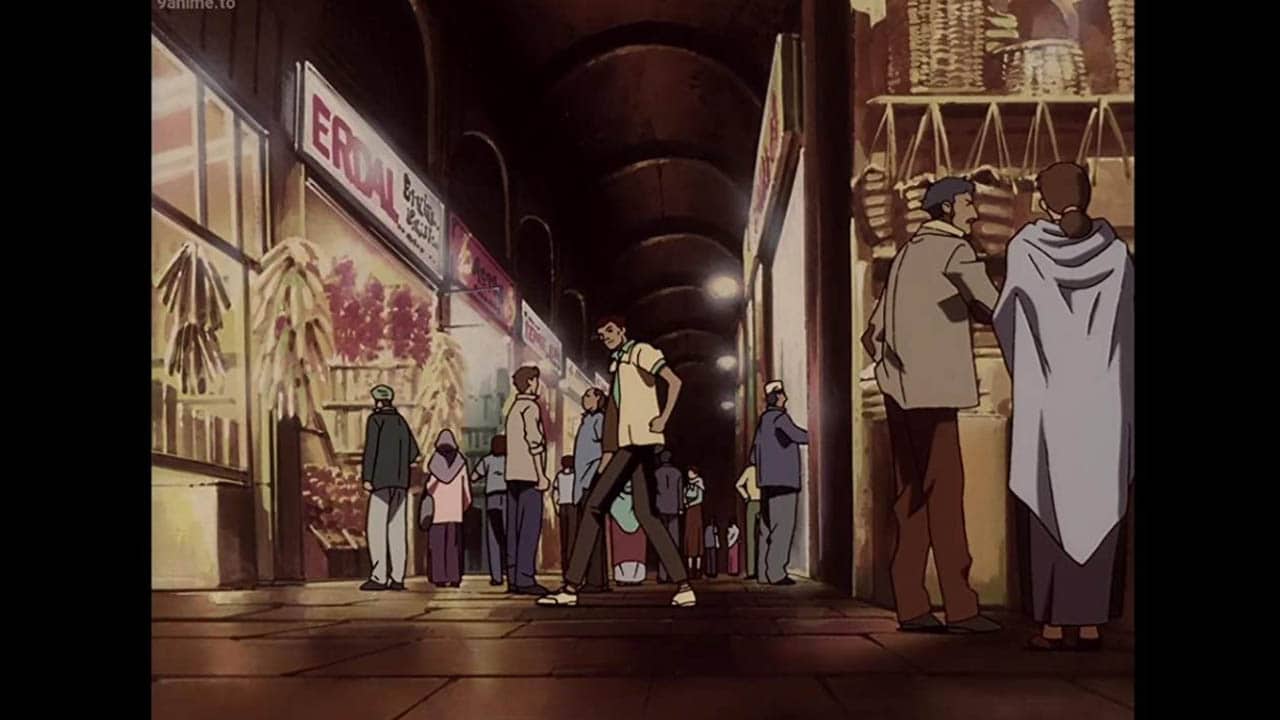As the reigning champion of premium wireless audio devices and health-tracking wearables, Huawei reveals two new products that follow the brand’s winning formula: the Huawei FreeBuds 4i and the Huawei Band 6. These devices are fresh off the lab, sporting cutting-edge features and stylish aesthetics that made Huawei a household name on the Philippine tech market. Most importantly, these new entries epitomize the best performance-to-price ratio that Huawei has perfected over the years with its impressive stable of products.
Pre-orders for the FreeBuds 4i and Band 6 will be on April 19 – April 29, which will also include limited-time Bluetooth speakers (worth PhP 1,499) as freebies. The Huawei Freebuds 4i is priced at PhP 3,599 while the Huawei Band 6 is at PhP 2,599. Customers can pre-order both devices online via the Huawei Store, Lazada, and Shopee, including a number of participating banks such as Unionbank, RCBC, Metrobank, BPI, BDO, and more.
Here’s a quick rundown of both devices’ top features that are sure to capture the fancy of Filipino techies and fashionistas:
Huawei FreeBuds 4i
The FreeBuds 4i continues the FreeBuds line’s excellent implementation of Active Noise Cancellation (ANC) — perfect for lengthy study sessions, a quick jog, and everything in between.
Advanced Active Noise Cancellation – The FreeBuds 4i uses built-in acoustic and algorithmic components to isolate external noise, lending to more immersive audio quality regardless of the environment. The buds’ Awareness Mode also lets users choose the degree of ANC so they can still communicate while jamming out.
Long-lasting battery life – Huawei lab tests peg the buds’ playback duration at up to a continuous 10 hours. A quick 10-minute charge with the included charging case squeezes out 4 hours of playback, too.
Premium style and fit – Like water, the FreeBuds 4i elegantly flows in its design to serve as a stylish accessory and comfortable audio peripheral at the same time.
The FreeBuds 4i works seamlessly with iOS and other Android devices as well, providing universal accessibility to Huawei’s patented premium audio experience.
Huawei Band 6
Following in the steps of Huawei’s well-regarded wearable series, the Huawei Band 6 fitness tracker is a versatile health companion, exercise buddy, and smart assistant rolled into one.
Two-week battery life – Users can wear the Band 6 for days on end without charging, thanks to a high-efficiency chipset and a host of smart power-saving algorithms.
FullView AMOLED Display – The 1.47-inch display provides a smartphone-like visual/tactile experience with detailed graphics, easy interactivity, and customizable watch faces.
All-day SpO2 monitoring – The Band 6 is capable of highly accurate blood oxygen (SpO2) readings, letting users monitor their SpO2 measurements and maintain them at ideal levels, thus avoiding potential health risks.
Huawei Health app support – Syncing the Band 6 with the Huawei Health app lets users view and track detailed reports on things like exercise data, heart rate, sleep quality, calories burned, and many others on their smartphone.
The Health app also has additional useful features like Dynamic Tracking where users can summarize exercise records into animated clips. These clips can be edited visually and shared on social media with a simple click. Other nifty features include mapping out running routes, as well as fitness challenges with users across the globe in exchange for exclusive rewards.
Adaptability is also an additional benefit to the Health app, as it’s compatible with other non-Huawei devices. Huawei users can simply download the app from AppGallery, iOS device owners can get it from the Apple App Store, and other Android users can visit the official download links (ex: https://appgallery.cloud.huawei.com/appdl/C10414141) and download from there. Users can get the app straight from their wearable too – just power on the device and swipe until it shows the Huawei Health installation prompt, then open the browser on the phone and scan the QR code on the wearable to automatically download the app.
Huawei AI Life integration
Fitness and audio experiences are just two of the lifestyle aspects that the Huawei AI Life strategy serves: other areas like productivity, entertainment, smart home, navigation, and many more fall under Huawei’s sprawling device/app ecosystem.
The Huawei AI Life app demonstrates how this unified ecosystem works by giving users control of their multiple Huawei device features, all in one place. For example, FreeBuds 4i owners can view remaining battery life, adjust Noise Cancellation, and check for software updates straight from the AI Life app – same goes for the Band 6 and many other Huawei products. This capability extends to other platforms, as the app is downloadable on the Apple App Store and is compatible with other Android devices.
This ecosystem all tie together seamlessly to provide users with smart, AI-enhanced lifestyles with services that inform each other of the user’s preferences to give them what they need when they need it.
